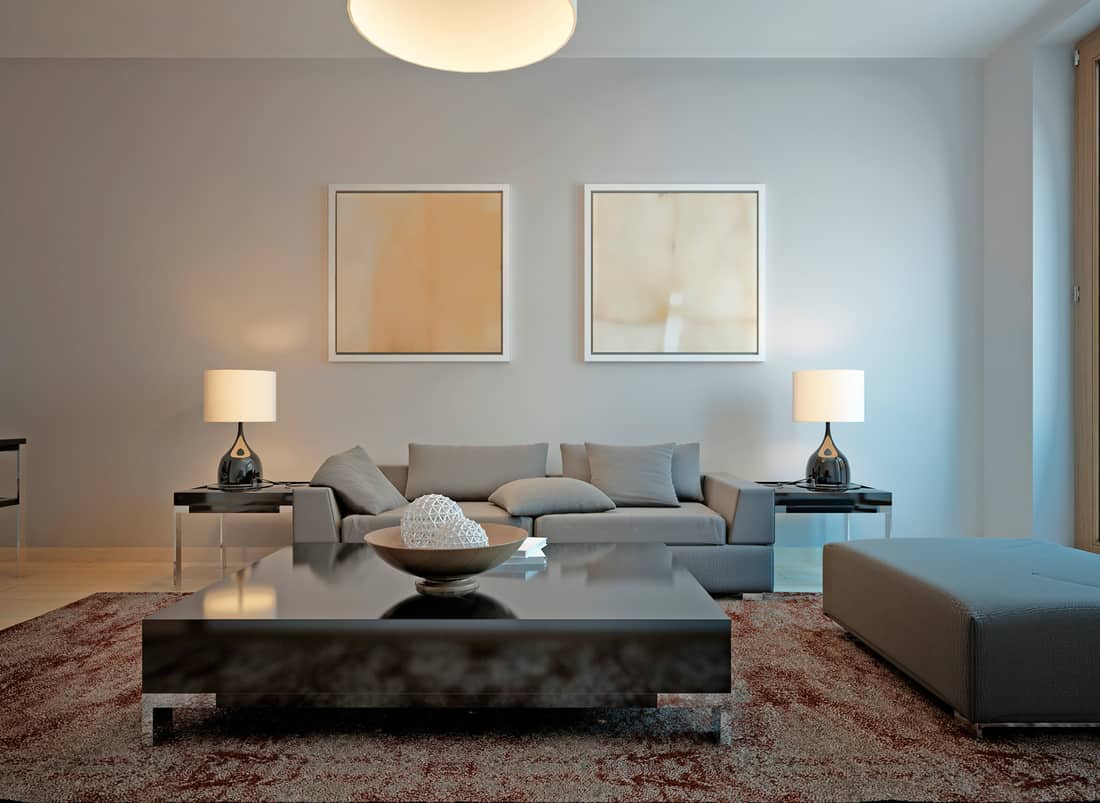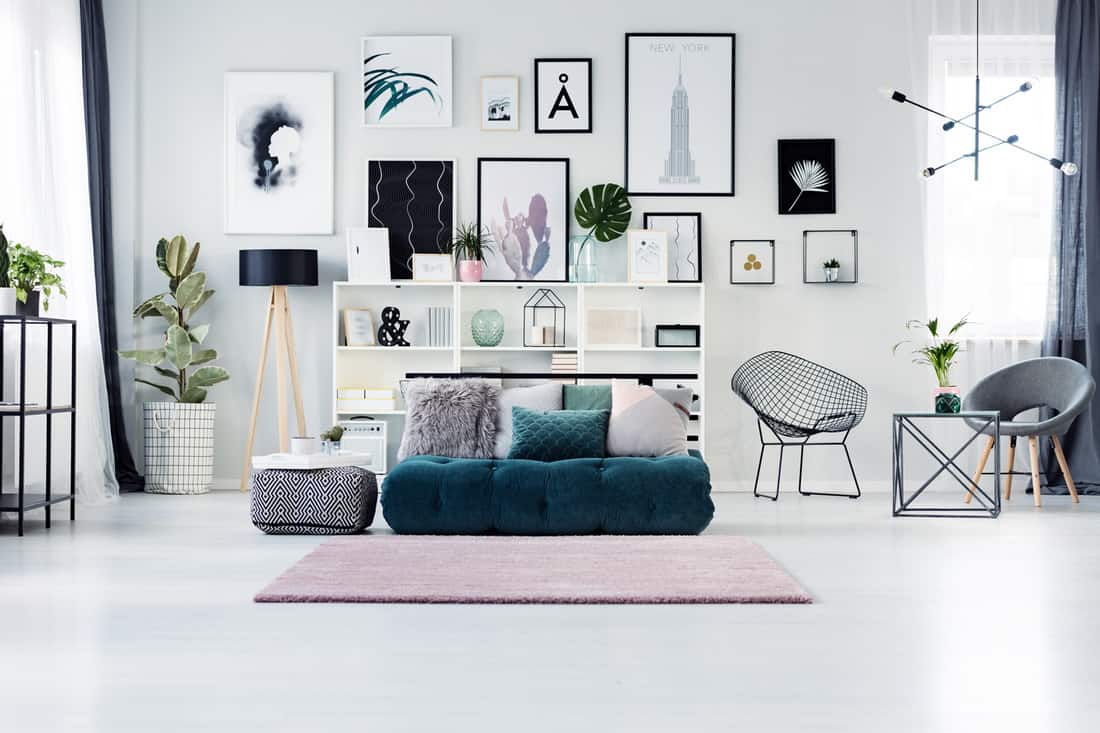The living room of a home is one of the most important rooms. Whether you use your living room mostly for spending time with family and friends, relaxing while watching television, or curling up with a good book, having the living room decorated with artwork that you love can make it even more inviting. For this post, we've found the best process for choosing the artwork for your living room.
There are several options as to how you can decorate your living room, especially when it comes to artwork. Getting started doesn't have to be confusing. In fact, here are a few steps to help you choose the best artwork for your living room:
- Consider the room's style
- Consider the room's color scheme
- Map out the available space
- Determine the genre you prefer
Creating warmth and maintaining harmony are often goals of many homeowners when it comes to decorating their living spaces, and the living room is no different. The artwork that you place on your walls says a lot about your personality and sense of style. Please keep reading as we delve into how to factor in the previously mentioned design and space considerations.

Choosing the best artwork for the living room

We sometimes add affiliate links and content that was curated and created by our team with the help of advanced ai tools to help showcase the best design styles.
Decorating your living room with beautiful artwork can make it more visually attractive and set the room's mood. Here are a few factors to consider before you go out and buy your first piece of artwork.
The Room's Style
Interior decorating is all about matching your home with your personality. Each wall can have a different theme, depending on the overall theme of the living room. For example, you may have a desk in your living room with a couple of abstract pieces hanging over it. Or you may want to have an impressionist painting hanging over a fireplace to make the room feel a bit cozier.
Hanging different types of art on the same wall will give the wall and room an eclectic feel. But it can also create undesirable effects depending on how the remaining walls are decorated. Remember, it's all about balance, symmetry, and cohesiveness.
The artwork that you select for your living room does not have to break the bank. There are several different retailers that you can check out to find pieces under $20 and even $10. You might also consider framing photos from your travels to hang in a decorative pattern. The most important thing to consider is that where you place the artwork makes the biggest difference in shaping the room.
The Room's Color Scheme
Another thing to keep in mind is the color scheme you currently have in the room or the color scheme you want the living room to be once it's completely furnished. If you are looking to promote serenity and relaxation in your living room, consider going with warm colors such as orange, beige, or brown. Even tones of ocean blue, green, and teal can also promote a sense of calm and peace in your living room.
If your living room already has all of its furniture and you only need art for the walls, your job just got a lot easier. Decide whether you want your art pieces to stand out or complement furniture and decor. For example, you may have a royal blue couch in front of a bare, all-white wall. This would be a great opportunity to hang a single painting, a focal piece, to accentuate the sofa.
Take some time to explore different color palettes and look for wall art that fits within the palettes of your living room. When you start to shop for artwork, be sure to consider the color palette of the piece, how well it matches with the color palette in your living room, and whether you wanted to be the main attraction or an accent piece.
Available Space
Next, you want to look at the space considerations for your living room. For example, if your living room is on the larger side, let's say 500 square feet or more, then you know you have ample space to decorate. You'll be able to accommodate larger pieces of artwork, as opposed to having limited wall space. You'll also want to identify the best position for each piece of artwork and decide where it can add the most value to the room or a specific wall.
Large artwork can dwarf a small space, while small pieces in a larger room can simply look lost. A large piece of artwork can also reduce the volume of furniture pieces or fixed features, such as a sofa or fireplace. Take the height of the room and furniture size into consideration when placing artwork on the wall. If you want to make the room's ceilings appear taller, you can do this by adding one or two large pieces to empty walls.
If your living room has many windows, this can also create a great space for artwork, especially if they have blinds instead of drapes. Just be sure to place the artwork at least four to six inches from the edge of the window to help it look balanced.
Art Genre
Lastly, you'll need to determine the type of genre that you want in your living room. If you are not familiar with the various types of painting styles, here are a few options to consider:
Contemporary
Contemporary art can be comprised of black and white or color photographs, pop art, or abstract paintings-- it's an extensive category of artwork. When deciding to go with contemporary pieces, try to find each piece's best placement so that each wall looks harmonious. You can add frames to certain pieces or position them next to other pieces that help them stand out more. If you have any brick walls in your home or have a loft, it can be a great setting to incorporate contemporary pieces.
Minimalism
Some people just like to keep things simple. Creating a minimalist look in your living room is fairly simple, as you can stick to one to two pieces of artwork per wall. Alternatively, leave some walls completely blank, letting the furniture pieces speak for themselves. Abstract paintings, cubism, and modular paintings can go very well with minimalist style living rooms.
Classic
Classic-style paintings include portraitures, like pictures of open fields, ships at sea, or palatial scenes. These pieces work best in living rooms with a more classic or traditional theme--which explains why you often see these types of artwork in hotels and office lobbies. Keep in mind that you can also mix and match this style with contemporary pieces if your living room has an eclectic vibe.
How Do You Choose Wall Art Size?

Ensuring that the artwork is the right size for your wall is absolutely important to create a sense of balance to each wall and room overall. For example, if a piece is too big for a wall, it will completely pull attention away from the other things facing the wall. On the opposite end, if a piece of artwork is too small for a wall, it will look like the wall is unfinished.
It's always best to measure your walls' dimensions before checking out various pieces of artwork (and be sure to note the dimensions of the artwork as well). A general rule of thumb when it comes to sizing artwork for the wall is to ensure that it does not exceed two-thirds of the furniture's size in front of the wall.
What Kind Of Paintings Are Good For A Living Room?

The type of paintings that will go best for a living room depends on the living room's current furniture setup, its colors, and your personal decorating style. Here are a few common living room styles to consider.
Framed classic paintings

Framed paintings can go with any living room decor. You can find frame paintings in various art styles, including the baroque, classic, or neoclassic styles. Today it's fairly easy to find a production of famous paintings by artists such as Van Gogh, Monet, or Matisse. Not only can these framed classic paintings work as great ice breakers, but they can also help to provide a more personable element to your living room, especially if you have a lot of abstract pieces.
Watercolor paintings

Watercolor paintings can add a sense of liveliness to your living room, or they can provide it with a sense of relaxation. You can find watercolor paintings in a variety of colors, with many showcasing various hues of green, blue, and purple.
Oil paintings

Oil paintings come in all styles. These beautiful compositions can work harmoniously together to give your living room a sophisticated look or a traditional feel with classic elements. You can also find oil paintings that incorporate a modern style if your living room has more of a contemporary look.
Does Every Wall Need Something On It?
Absolutely not. Balance is the key when it comes to decorating and hanging artwork. To avoid an unbalanced look, start with one piece of artwork per wall and go from there, adding one piece at a time until you get the look that you want. If you have so many pieces of art on the wall, to the point where the wall is no longer visible, this isn't necessarily a bad thing. However, it can make the living room look too busy, which can be a bit distracting for visitors.
How Much Of A Wall Should Art Cover?
It depends on the wall and the look that you prefer; however, a general rule is that the artwork should feel about 2/3 to 3/4 of the available wall space.
How Do You Avoid Overdecorating Walls?

The best way to avoid over decorating your walls is to consider how it will fit into the wall's entire area, rather than just taking it at face value on its own. Ask yourself, "Does this wall need an extra piece of artwork?" If you find a piece of artwork that you want to put in your home, but you realize that your living room has all of the artwork it needs, consider moving it to another room. You can also change up the artwork every few months to give the living room a different feel--there are no rules.
Wrapping Things up
Individuality and desire for artistic expression can set a living room apart when it comes to hanging artwork. Look for pieces that inspire you, and don't be afraid to think outside of the box with pieces that may be untraditional--the sky is really the limit!
Before you go, be sure to check out our other posts:
